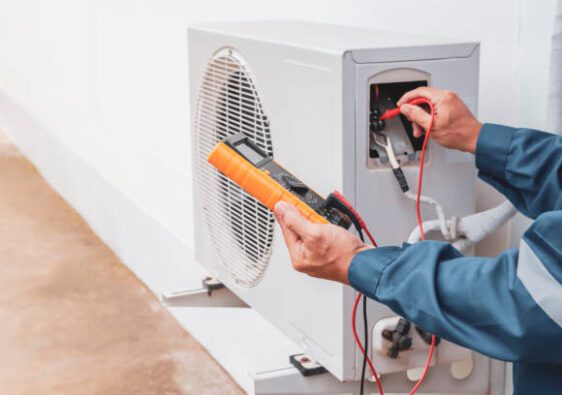According to research, floods are the leading contributor to weather-related fatalities in America, with an estimated 200 deaths every year.
It’s hard to know what to do when a flood hits. A flood can happen anywhere at any time, so it’s important that you are prepared.
Having an early flood warning system in place can help minimize the damage caused by floods and save lives.
Keep reading to learn 10 incredibly important things you need to know about early flood warning signs.
1. Chambers of Commerce Warn First
Chambers of Commerce are usually the first to report potential flooding in an area. They get information from their members about floods. This includes the height of rivers, how much rain has fallen, and if dams will hold up.
Chambers of Commerce then contact authorities with this information.
2. Street Flooding Causes Traffic Issues
Street flooding can cause traffic problems. When the street is flooded, it cuts off certain areas from traffic, just like if a road was closed during construction.
If the flooding damages infrastructure, like sewer lines or gas lines, then the road will stay closed for a longer time.
The first to report on street flooding are usually members of the public who circulate information via social media sites like Facebook and Twitter.
This includes stories about submerged cars, blocked intersections, or even people being stranded in their homes due to rising water levels.
Otherwise, relevant authorities should be contacted as soon as possible (best done after calling 9-1-1 but before calling non-emergency numbers).
3. Water Levels at Historical Sites
Water levels at historical sites, such as bridges and dams, are monitored by people who work near them. Other critical infrastructure near waterways, like roads and airports, may also have water level monitors nearby.
These people usually submit reports to authorities and/or Chambers of Commerce and can even do so through apps if their phones have the capability.
Location information is often required in case there’s a need to visit the site during an emergency event.
4. Levee Breaches
If a levee breaks near you, prepare yourself for an emergency. If there is a coastal community nearby that is protected by your levee system and it breaks, you should leave the area as soon as possible.
Those living outside of affected areas can help by donating goods that victims may need such as food, bottled water, and survival supplies.
You may want to donate money instead of specific items. This is because some places will not be able to receive these types of donations immediately due to road closures/water levels preventing truck access.
5. Wind Speeds
They must record wind speeds so they can enter them into computerized weather prediction models. This is usually done by National Weather Service offices and other relevant authorities such as forestry commissions.
At the very least, they need to report wind speeds over a certain level (like 50 miles per hour) to all relevant authorities so they can prepare for weather emergencies.
Otherwise, if you’re going on a nature hike it’s recommended to do so only when the winds are below this threshold unless doing otherwise poses more of a risk.
6. Tides
Authorities use tides to monitor water levels near coasts and inland rivers/lakes. This is important because they need to know how much weight the dams can take.
The authorities also use tides to predict when tsunamis might hit coastal areas.
7. Rivers and Streams
Authorities use data on the flow of rivers and streams to monitor for floods. They also use this information to predict when a storm might cause a lot of rain or snowmelt, which can lead to flooding.
This information is also used to determine where people should evacuate if there is a danger of flooding.
This warning usually comes from weather stations situated along or near waterways which alert relevant authorities via radio, television, or the internet.
Unlike street flooding, river flooding takes time to spread which gives local communities enough time to prepare for evacuations. However, some agencies won’t issue a warning until they’re 95% certain.
8. Water Reservoir Levels
Water reservoir levels must be monitored in case there is a need to release water. They do this to prevent damage to the structure of the dam or too much water buildup.
Authorities use these measurements to decide when it would be best to open the sluice gates and release water.
You can even do so yourself if you have the knowledge, materials, and tools necessary by using an app on your phone which calculates when it’s safe to do so.
This is especially important if you live in an area with dams that are at risk of falling due to overcapacity.
9. Flooding Streams
Flooding streams must be monitored. They do this to figure out the risk of flash weather. A flash flood can happen if there is a lot of rain and the water flow in the drainage area increases.
In most cases, people will usually receive enough warning time (at least 12 hours) if their community has an early flood warning system.
However, residents should always keep sandbags for this purpose on hand because there is no guarantee that everyone will receive sufficient warning.
Also, they may reuse sandbags depending on how quickly water levels rise to avoid further flood damage.
10. You Must Plan Your Flood Response
You need to prepare yourself for a flood in case you need to evacuate an area or rescue people from the water. If you live in an area that floods often, it is a good idea to plan and practice what you would do if this happened.
Floods happen often in these areas, so the next one could be soon. This is especially important for children because they might not know what to do in this situation. Preparation could save their lives.
It may even prompt relevant authorities to rethink existing flood warning systems as well as establish new ones so everyone can receive proper warnings before anything bad happens.
If you’re in an area susceptible to flooding, it’s really important to have insurance. But you can save money by not joining National Flood Insurance Program. Instead, get a quote from the private flood insurance market.
Are You Well Equipped for a Flood Warning?
As we head into the height of hurricane season, it’s important to remember that floods can also be a major threat. With the right knowledge and preparation for a flood warning, you can keep your loved ones safe.
Want more articles like this? Check out our blog!



